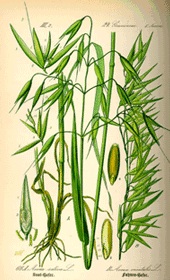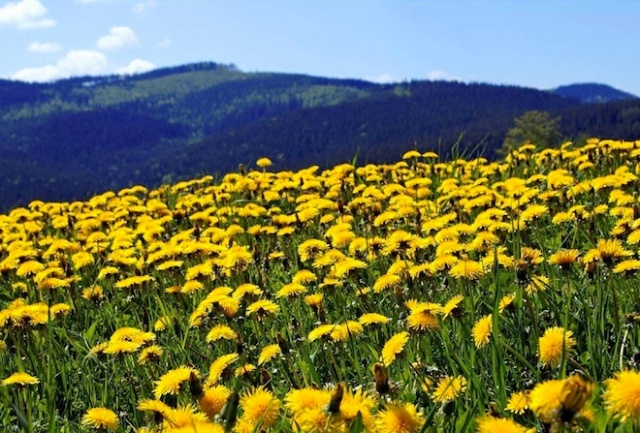
From the time she was 16, starting in a series of fantasy books, the redheaded Caylith began to study the properties of plants. Under the guidance of her marvelous grandfather, she found that somehow the plants had an affinity for her, rather than the other way around!

From the road lilies that give her uncommon strength, to the “sun-petal” tea and chicory that she and the other characters drink daily, all the Caylith books—from the early fantasies to the later romances— are full of plants, used for preternatural magical abilities, for food, for refreshing beverages, and of course for purposes of healing.
Notice how many of the plants in this article are in the family Asteraceae or Compositae, those with composite, “daisy-like” flowers.
As the author, I gave healing properties to plants both fictional and real. “Road lilies” are pure fiction. And yet, almost two years after making up those little beauties from my imagination, I found that the white lily grass called Ornithogalum almost exactly fits my idea of Caylith’s beloved road lily! They resemble the extremely hardy “rain lilies” in my central Texas yard. Just like Caylith’s plants, whose leafless stems favor the harsh soils in the cracks along the old Roman roads, their bulbine roots find deep cracks and are difficult to bring up completely without using a shovel and plenty of elbow grease.

I invented the name “Sun-petals” for dandelions, a word that would not have evolved for several hundred more years, for it was adapted from the French words dent de lion or “lion’s tooth.”
In Gaelic Irish, dandelion is called lus Bhríd (Brigid’s plant) or Bearnán Bríd (indented one of Brigid) where “lus” is the Irish equivalent of the English “wort,” or “plant.”[1] To this day, dandelion roots and leaves are used widely in teas, and the leaves are considered by many to be a delicacy in salads.
Rough-and-tough former soldier Gristle—not to mention a few other characters, like Dubthach—favors chicory, another flower from the family compositae. Our American pioneer fathers drank a coffee-like beverage made from the tuberous roots of these hardy plants. Even in my rough “pioneer” yard out here in central Texas, chicory grows wild in sunny, gravely alkaline soil in patches throughout my yard.
Chicory flowers, a kind of pale purple or lilac, nod in exquisite greeting to the coolness of early morning. But their roots are anything but exquisite. Tough and stout, they give a bitter yet rich flavor when boiled or ground and steeped, so that they make a coffee substitute when there is no Starbucks around.

One of the recently discovered ingredients in chicory is inulin, a complex of sugar that is high in fiber and that has several beneficial medicinal properties, especially for treatment of diabetes and for weight control. But Gristle drinks it for its sweet-bitter edge that he’s grown almost addicted to over the years. In fact, his companion Wynn gives him a hard time over his “herb,” which the young man claims to put hairs on his friend’s knuckles. Another of Gristle’s friends, the ollamh Dub, is addicted to chicory.
In Fire & Silk (to be re-released soon), the young woman Mariana tries to mend the bruised and twisted limbs of Flann, who has fallen into a deer blind. Looking around the boglands, she finds feverfew and fennel, both of which grow throughout the northern stretches of modern Co. Donegal (then Tyr Connell) where she has found herself.

The fennel, thankfully, was well past its bloom, and hundreds of seed capsules were loose. She shook the bunch onto her woolen blanket, releasing the seeds. Next, she stripped leaves from the fever weed. She poured water from her wineskin into her own metal cup and threw in as many fennel seeds as she imagined would make a strong poultice. She found Flann’s cup among his supplies and brought it to the fire, filling it, too, with water. Before the concoction became too strong, she poured part of it into the second cup. And then she added the stripped leaves. This second cup would be his wildwood tea.
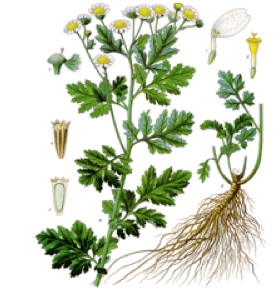
Another interesting plant used throughout my historical novels—indeed throughout most of Europe to this day-—is the bark and leaves of the willow, salix. Scientists have found that the main ingredient of willow bark is salicylic acid (yes, the main ingredient in aspirin).
A white willow tea, or a poultice made from the steeped parts of the willow, would have soothed fevers, cured headaches, and dulled toothaches . . . if the patient could tolerate the nasty flavor.
One of the healing combinations that I invent for my books comes from an old idea, the use of gruits. In beer making, as we know, hops lend the bitter yet delicious flavor that makes beer such a distinctive and desirable beverage. But in those climes where hops do not grow, ingenious beer-makers have come up with any number of substitutes for them. Such combinations are called “gruits.”
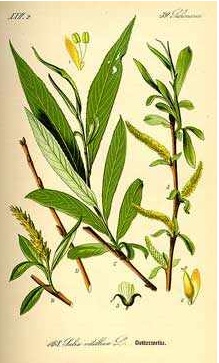
Trying to find a palliative for Owen Sweeney MacNeill, Caylith comes up with an individualized potion, or gruit, for him. She uses part of the sacred hawthorns that grew near his sacred clootie well, and other plants such as heathers that were native to his homestead at Limavady. The resulting mix really does act as almost a narcotic for the ailing Owen. It also has the astonishing side effect, as Caylith discovers, of being an aphrodisiac.
Following is a list of additional plants that could have been readily gathered in Caylith’s northern Ireland: [2]
Meadowsweet (Filipendula ulmaria)
Cat’s Claw – (Uncaria tomentosa)
Oregano – (Origanum vulgare ssp. hirtum)
Rosemary – (Rosmarinus officinalis)
Thyme – (Thymus vulgaris)
Yellow Dock – (Rumex crispus)
Wood Betony – (Pedicularis canadensis)
Passion Flower – (Passiflora incarnata)
Wild Lettuce – (Lactuca virosa)
Tumeric – (Curcuma longa)
Herbs that are helpful in pain treatment by gradually restoring the proper function of the body and increasing health and vitality:
Echinacea – (Echinacea angustifolia, Echinacea purpurea)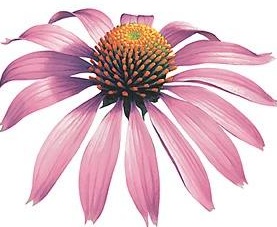
Burdock – (Arctium lappa)
Skullcap – (Scultellaria laterifolia)
Lobelia – (Lobelia inflata)
Valerian Root – (Valeriana Officinalis)
Herbs that are are used externally for pain relief
Peppermint – (Mentha piperita L.)
Lavender – (Lavendula officinalis)
[1] Noted in “Plants in Folklore,” part of a series by folklorist Eugene Daly in the Ireland weekly magazine Ireland’s Own, summer 2012. With special thanks to Paul McDermott who sent me this article.
[2] This list, and the photo/art of the fennel and feverfew, are taken from “The Herbal Resource,” www/herbal-supplement-resource.com
Don’t miss Erin O’Quinn’s novels centered in Old World Ireland:
The Twilight of Magic (fantasy for all ages)
http://amzn.to/2C6SI6m
Dawn of Ireland (M/F Romance)
Storm Maker
The Wakening Fire 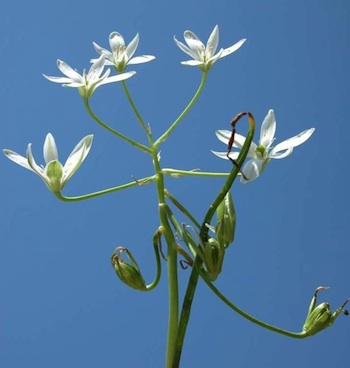
Captive Heart:
Fire & Silk: Coming 2018
Erotic M/M Romance:
Warrior, Ride Hard
Warrior, Stand Tall
Warrior, Come Again
Stag Heart:
QRI: https://is.gd/bQK5lo (all links, reviews, #explicit #excerpt)
~and~
Kindle US https://is.gd/G6elnN
Kindle UK https://is.gd/ocon0O
SeaToSky https://is.gd/MrfeiG (pdf or epub)
Smashwords https://is.gd/vU7yxi (epu



